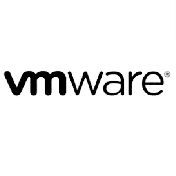Seminarinhalt
In diesem Training werden die wichtigsten Elemente der Microsoft 365-Messaging-Verwaltung untersucht, einschließlich Nachrichtentransport und Nachrichtenfluss, Messaging-Sicherheit, Hygiene und Compliance, Messaging-Infrastruktur und Hybrid-Messaging.
Dieser Training ist für Personen konzipiert, die Messaging Administrator in einer Microsoft 365-Bereitstellung werden möchten.
Dieser Training ist für Personen konzipiert, die Messaging Administrator in einer Microsoft 365-Bereitstellung werden möchten.
Programm
Manage mail flow
- Explore mail flow in Microsoft Exchange
- Manage mail flow in Exchange Server deployments
- Manage mail flow in Exchange Online deployments
- Manage mail flow in hybrid Exchange deployments
- Configure message transport options
- Configure SMTP domains
- Configure connectors
- Troubleshoot SMTP mail flow
- Troubleshoot shared namespace environments
- Troubleshoot Transport Layer Security encryption issues
- Troubleshoot network-based issues
- Monitor Exchange Online with Microsoft Service Health
- Troubleshoot with alert policies in Exchange Online
- Explore mail flow rules
- Examine how mail flow rules work
- Configure mail flow rules
- Explore Exchange Online Protection
- Plan message routing for Exchange Online Protection
- Examine message hygiene monitoring and reporting
- Examine Microsoft Purview Message Encryption
- Examine message headers and spam confidence levels
- Examine anti-spam and anti-malware protection
- Manage anti-spam protection
- Manage anti-malware protection
- Examine advanced anti-spam features
- Manage spoofing protection
- Manage phishing protection
- Configure transport rules
- Examine threat protection in Microsoft 365 Defender
- Explore using Configuration Analyzer to improve security policies
- Examine how Safe Attachments protect against malicious attachments
- Examine how Safe Links protects against malicious URLs
- Manage spoof intelligence
- Manage anti-phishing policies
- Manage the Tenant Allow/Block list in Microsoft 365 Defender
- Examine Attack simulation in Microsoft 365 Defender
- Examine message policy and compliance
- Explore the Microsoft 365 permission model
- Configure retention policies
- Run a message trace
- Explore sensitivity labels
- Manage inactive mailboxes
- Examine In-Place and Litigation holds
- Configure Messaging Records Management
- Analyze message tracking
- Plan and implement in-place archiving
- Explore journaling in Exchange
- Manage administrator and mailbox auditing
- Design content searches
- Manage content searches
- Manage eDiscovery cases
- Examine password policy options
- Explore self-service password management
- Implement multifactor authentication for Exchange
- Plan password policies
- Explore modern authentication
- Configure conditional access policies
- Configure workload policies and throttling
- Configure quota configurations
- Deploy Microsoft 365 add-ins
- Examine Exchange federated delegation features
- Examine Exchange federation sharing components
- Plan for federation trusts and certificates
- Implement organization relationships
- Implement sharing policies
- Explore Role-Based Access Control
- Examine management role groups
- Examine built-in management role groups
- Implement admin roles for management role assignments
- Troubleshoot admin roles
- Explore Privileged Identity Management
- Manage role groups in Exchange Online
- Implement user roles for role assignment policies
- Implement management role assignment policies
- Create new roles, role assignments, and scopes
- Explore the use of split permissions
- Explore the use of multiple-forest permissions
- Explore the differences in permissions
- Explore recipient types
- Explore resource mailboxes
- Explore shared mailboxes
- Explore linked mailboxes
- Explore groups
- Explore public folders
- Manage mailbox settings
- Manage resource mailboxes
- Manage shared mailboxes
- Create and manage mail contacts and mail users
- Manage permissions for recipients
- Create and manage groups
- Create and manage public folders
- Explore address lists
- Create and manage address lists
- Examine address book policies
- Configure offline address books
- Examine email address policies
- Examine the connection options for Exchange to Microsoft 365
- Explore the components of a hybrid deployment
- Explore Microsoft Entra Connect
- Examine the Microsoft 365 identity options for a hybrid Exchange deployment
- Compare Exchange delegated federation and Open Authentication
- Plan for Exchange hybrid configuration
- Examine Organization Configuration Transfer
- Examine Exchange Modern Hybrid and the Hybrid Agent
- Review mail flow options for a hybrid deployment
- Prepare to run the Hybrid Configuration Wizard
- Examine hybrid deployment best practices
- Explore migration options to Exchange Online
- Determine which migration option to use
- Update DNS during a Microsoft 365 migration
- Plan an IMAP migration
- Run an IMAP migration
- Move mailboxes using an IMAP migration
- Plan a cross-tenant migration
- Prepare source objects for a cross-tenant migration
- Troubleshoot directory synchronization
- Troubleshoot pass-through authentication and single sign-on
- Troubleshoot transport with Exchange Online
- Troubleshoot client access in coexistence
- Troubleshoot the Mailbox Replication service
Zielgruppen
Messaging Administrators sind für die Planung, Bereitstellung, Konfiguration, Problembehandlung und Sicherung der Messaginginfrastruktur in einer Hybrid- und Cloudunternehmensumgebung zuständig. Die Verantwortungsbereiche umfassen das Verwalten von Empfängern, Postfächern, Übertragung, E-Mail-Flow, administrativen Rollen, Bedrohungsschutz, Compliance, Migrationen und Clientkonnektivität.
Um eine sichere Hybridtopologie zu implementieren, die den Geschäftsanforderungen einer modernen Organisation entspricht, müssen Messaging Administrators mit anderen Workloadadministratoren und den Microsoft 365 Enterprise-Administratoren zusammenarbeiten.
Der Messaging-Administrator sollte über gute Kenntnisse in den Bereichen Authentifizierung, Lizenzierung und Integration mit Microsoft 365-Anwendungen verfügen.
Um eine sichere Hybridtopologie zu implementieren, die den Geschäftsanforderungen einer modernen Organisation entspricht, müssen Messaging Administrators mit anderen Workloadadministratoren und den Microsoft 365 Enterprise-Administratoren zusammenarbeiten.
Der Messaging-Administrator sollte über gute Kenntnisse in den Bereichen Authentifizierung, Lizenzierung und Integration mit Microsoft 365-Anwendungen verfügen.
Vorkenntnisse
Dieses Training richtet sich an Personen, die die Position des Microsoft 365 Messaging-Administrators anstreben.
Wichtige Information
Achtung:
Dieses Training wurde am 29.12.2023 seitens Microsoft eingestellt und das Examen: MS-203: Microsoft 365 Messaging ist nur noch bis 31.12.2023 verfügbar.
Dieses Training behandelte prüfungsrelevante Themen zum Examen: MS-203: Microsoft 365 Messaging
HINWEIS:
Sie benötigen nur Exchange Online Themen - wir empfehlen dieses Seminar:
SMEXonline Microsoft 365 - Exhange Online
Sie benötigen nur Exchange hybrid Themen - wir empfehlen dieses Seminar:
SMEXhybrid Microsoft 365 - hybrid Messaging
Dieses Training wurde am 29.12.2023 seitens Microsoft eingestellt und das Examen: MS-203: Microsoft 365 Messaging ist nur noch bis 31.12.2023 verfügbar.
Dieses Training behandelte prüfungsrelevante Themen zum Examen: MS-203: Microsoft 365 Messaging
HINWEIS:
Sie benötigen nur Exchange Online Themen - wir empfehlen dieses Seminar:
SMEXonline Microsoft 365 - Exhange Online
Sie benötigen nur Exchange hybrid Themen - wir empfehlen dieses Seminar:
SMEXhybrid Microsoft 365 - hybrid Messaging



Sehr gut
Microsoft 365 Messaging
15.05.2023Sehr gut
— Robert S.Super
Microsoft 365 Messaging
24.06.2022Super
— Anthony-Georg H.